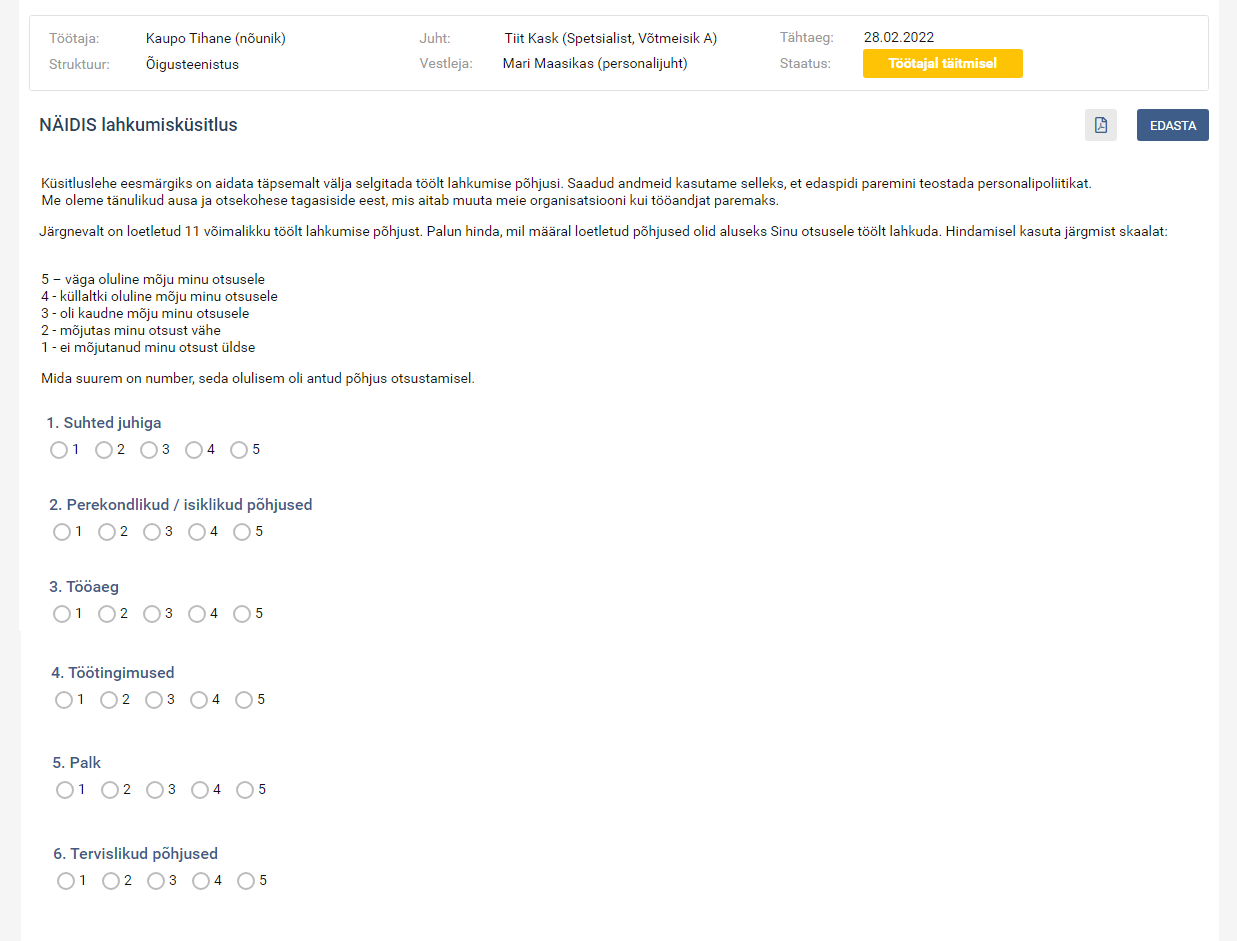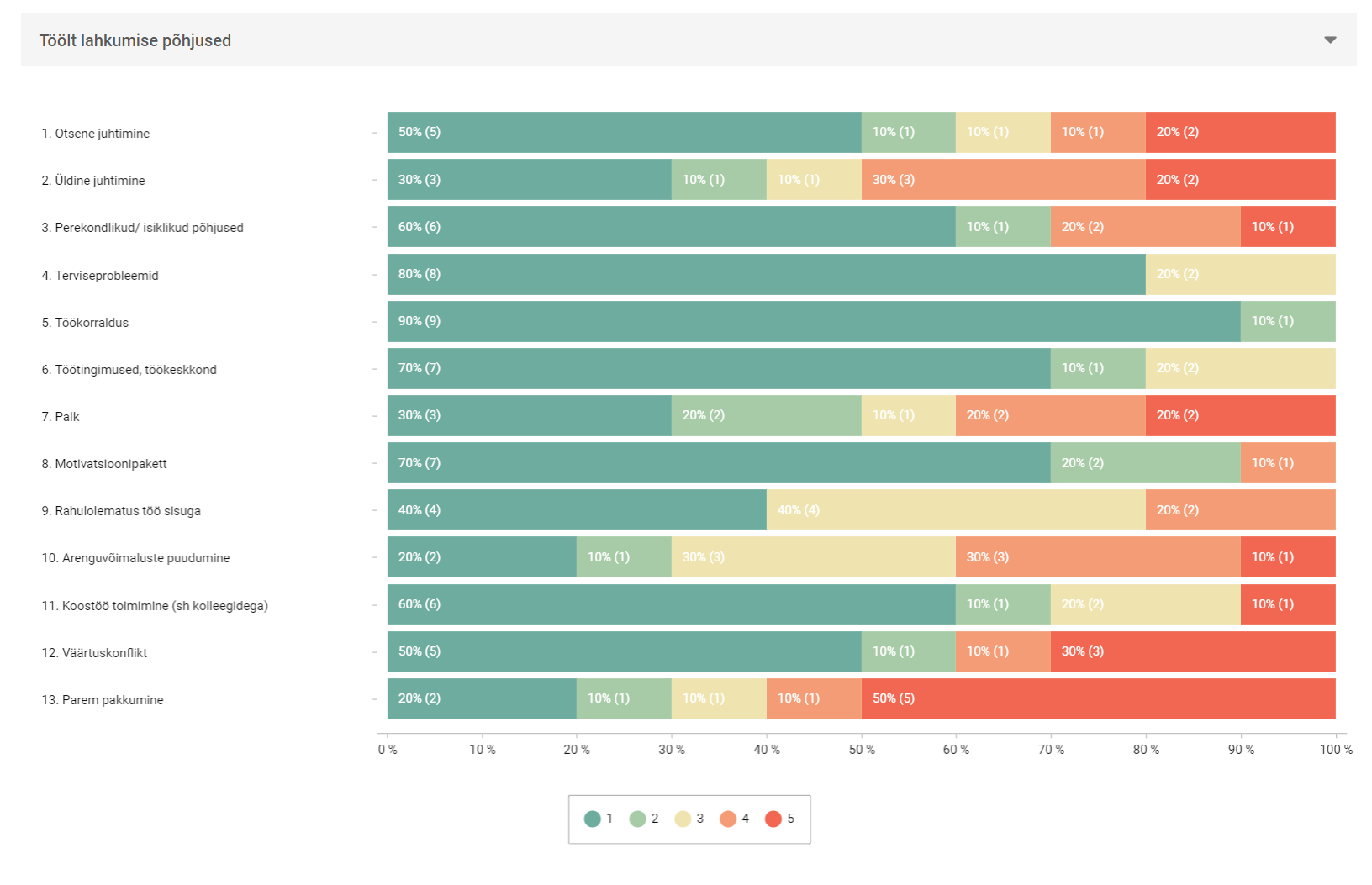
Employee turnover is a natural part of any organization’s development. While turnover can be challenging, it also offers a valuable opportunity to learn and grow. A well-designed exit survey can help you understand why people leave your organization and provide managers and HR with the necessary input to improve the employee experience and organizational culture.
Studies show that the costs of employee turnover can range from 30% to 200% of annual salary, depending on the position and industry, so understanding it is important. But even more important is to see every turnover as an opportunity to learn and develop – that’s how the organization can do better in the future.
In a large organization, HR won’t be able to talk to every employee in person, but it’s important to gather feedback from the middle. So it’s worth implementing an online exit survey. This gives employees the opportunity to provide honest feedback, and the organization can gain insight into the real reasons for turnover and find ways to prevent future turnover and improve the employee experience.
A well-designed exit survey is clearly structured and includes both qualitative and quantitative questions that are thoughtfully crafted with the aim of gathering input for management decisions.
Below are some examples of questions that exit surveys can help answer.
We recommend offering 10–15 response options, such as job content, management, career opportunities, compensation, workload, work environment, personal reasons, etc. Ask the employee to rate how much each factor influenced their decision to leave (e.g. major impact, partial impact, no impact at all). This helps later identify what’s working well and which areas need improvement. Be sure to also include a comment box for explanations and additional feedback.
Open-ended feedback here helps to understand the real reasons behind the employee’s decision and provides insights into what could be changed in the future to retain valuable employees. This may include improving work conditions, management practices, or offering better development opportunities.
Ask the employee to evaluate their full employee journey — from applying to the role through to departure. Work experience includes their interaction with job responsibilities, colleagues, leadership, work organization, and the physical or remote work environment.
This question can be presented as a rating scale (e.g. 1–10 or descriptive ratings) or as an open-ended question (e.g. “What went well, and what could have been better?”). Ratings give a quick overview of satisfaction levels, while comments provide context on what aspects worked well and which need improvement.
This is a standard Employee Net Promoter Score (eNPS) question, rated on a 0–10 scale. It helps assess whether the company’s culture, work conditions, and management style were strong enough that the departing employee would recommend it to others. A low score may point to deeper issues that require attention.
This question also plays an important role in employer branding. People trust personal recommendations more than official channels, and a positive reputation helps attract stronger candidates while lowering recruitment costs.
A positive response suggests that the employee had a good overall impression of the company and may be open to rejoining later. This often indicates that their departure was driven more by personal reasons (e.g. career change, relocation, desire for something new) than organizational issues.
However, if the feedback includes critical remarks, it may point to internal problems like dissatisfaction with job content, management, team dynamics, workload, or organizational culture. The tone of this answer helps uncover the real reasons for leaving and assess whether internal changes are needed.
If you would like specific exit survey samples, please write to info@planpro.ee!


Word the questions neutrally. The questions should not be presented in a biased way and should not direct the respondent in a negative or positive direction. For example, instead of writing “Poor management”, use “Relationship with the manager”.
Scale or open-ended question – think about the form in which you want the results. Scale questions are suitable for use if you want to visually compare the results. Always include a comment field so that the employee can specify their assessment if they wish.
The questionnaire should be meaningful, but not tiring. You would certainly like to receive detailed feedback from the departing employee, but a survey that is too long may go unanswered or be completed in a hurry. A good exit survey is fairly short, but thorough enough to obtain valuable input.
Add an introduction to the beginning of the survey. We recommend adding a short explanation at the beginning of the questionnaire, where you write why the survey is necessary, who will see the results and add an approximate time it will take to respond.
Example: Thank you for being willing to share your feedback.
This survey will help us better understand what influenced your decision to leave and how we can improve the employee experience in the future. It will take approximately 5-7 minutes to complete. Your responses are confidential and visible only to the HR department. Only aggregated summaries will be provided to managers.
Not all departures are due to dissatisfaction. Many employees leave because they are looking for new challenges, moving to another area, or for other personal reasons. Retirement is also a common reason for leaving a job in an aging society.
Feedback from a departing employee should be seen as an opportunity to develop the company, not as an accusatory or negative process. An open and professional departure experience helps maintain a strong company image and creates the opportunity for the departing employee to rejoin the company in the future or recommend it to their friends and acquaintances.
Customizable questionnaires. You can create a questionnaire with your own questions, but if you wish, you can also find inspiration from sample questionnaires.
Confidentiality guaranteed. The results of the questionnaires are only visible to HR staff, who can make generalized summaries for managers.
Survey + interview notes in one place. In addition to the written questionnaire, the HR staff can also conduct an exit interview and save their comments in the same form.
Visual overviews of the results. Visual report views provide a quick and clear overview of the reasons for leaving. The results can be viewed both for the entire organization and by specific departments or job groups.
Automated process: If the company’s information system (e.g. Entra ID) transmits the employee’s departure date to PlanPro, the system can automatically send the survey to the employee, for example, 10 days before their last working day.
Read more about the capabilities of PlanPro software HR module here: https://planpro.ee/en/employee-appraisal-software/
Written by Reelika Ristolainen and Riina Truusalu.
If you would like ideas for your organization’s exit survey or want to learn more about automating the process of asking for feedback from those leaving the company, feel free to get in touch!
Follow us on social media:
Täitke palun kontaktivorm ning võtame teiega ühendust.
Please fill in the contact form and we will contact you.